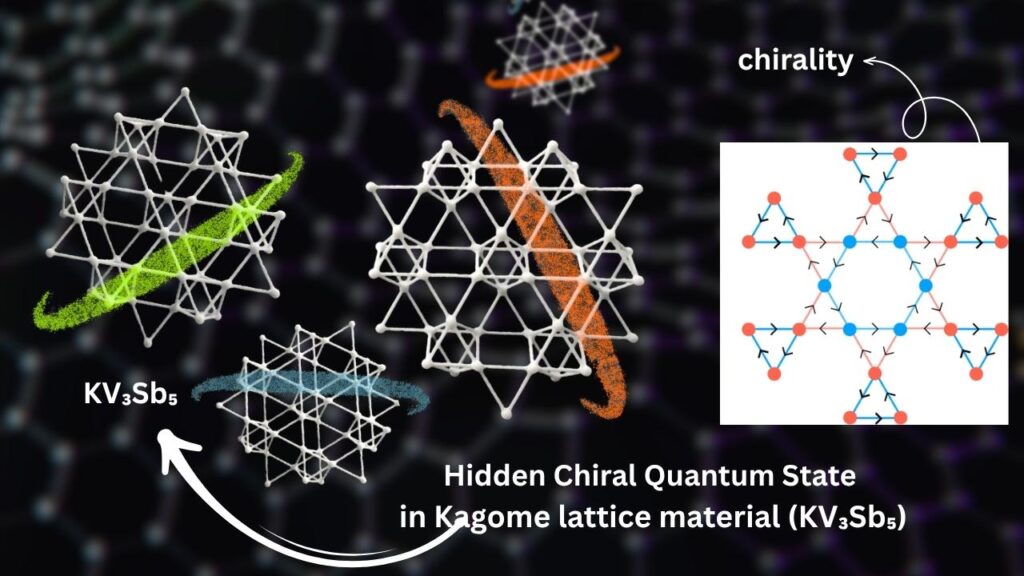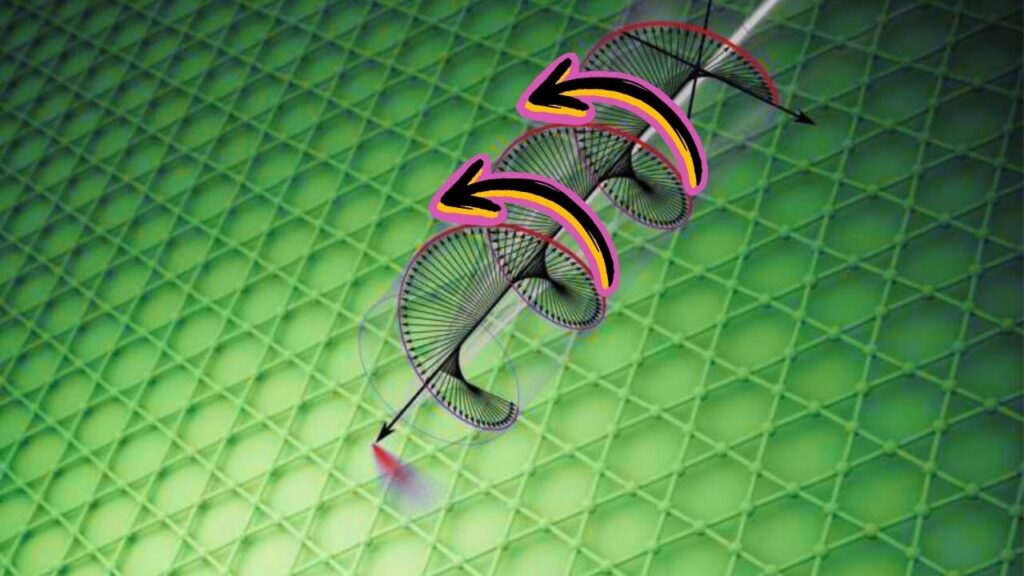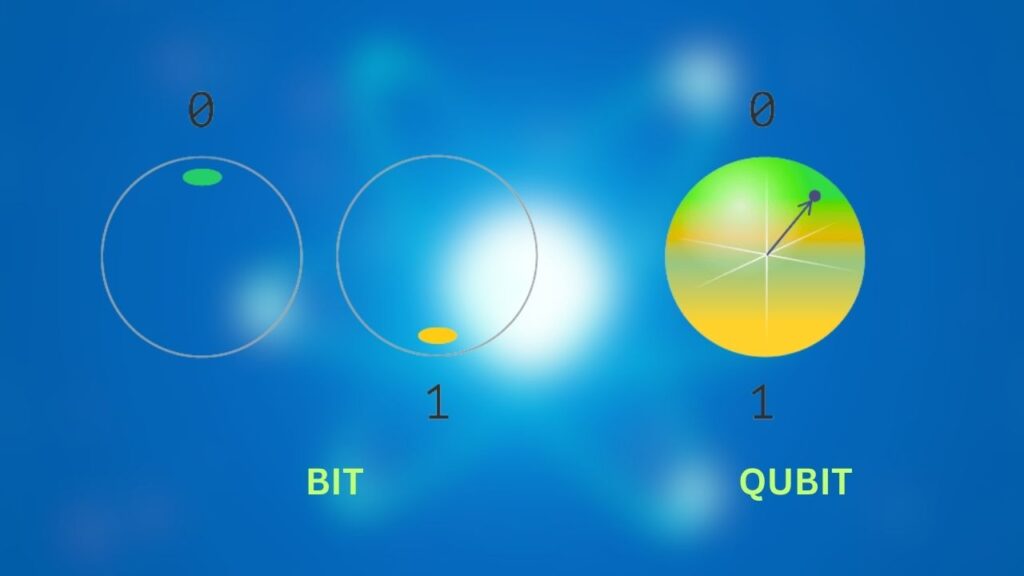New Quantum State Discovery: A new quantum state discovery is making headlines and promises to change the world of material science as we know it. Scientists at Princeton University have uncovered a hidden chiral quantum state in a special material, opening the door to new technologies and a better understanding of the universe. This breakthrough is not just for experts—it’s a story that everyone can appreciate, from curious kids to seasoned engineers.

In this article, we’ll break down what this discovery means, why it matters, and how it could shape the future. Whether you’re a student, a professional, or just someone who loves science, you’ll find practical insights and clear explanations here.
New Quantum State Discovery
| Topic | Details |
|---|---|
| Discovery | Hidden chiral quantum state found in a Kagome lattice material (KV₃Sb₅) |
| Lead Institution | Princeton University (official website) |
| Key Technology | Scanning Photocurrent Microscope (SPCM) |
| Impact | Challenges old beliefs about symmetry; could enable new quantum devices |
| Publication | Nature Communications, 2025 |
| Potential Applications | Optoelectronics, quantum computing, advanced sensors |
| Professional Relevance | New research directions in physics, materials science, and engineering |
| Key Statistic | First time chiral symmetry observed in a bulk topological quantum material |
The discovery of a new chiral quantum state in a Kagome lattice material is a game-changer for material science and quantum physics. It challenges old ideas, opens new research paths, and could lead to amazing new technologies—from smarter computers to better solar panels. Whether you’re a student, a scientist, or just someone who loves science, this is a story of curiosity, teamwork, and the endless possibilities of discovery.
What Is a Quantum State—and Why Is This Discovery Special?
Understanding Quantum States
A quantum state describes how tiny particles (like electrons) behave and interact. Imagine a game where the rules are so strange that a ball can be in two places at once, or spin both left and right at the same time. That’s the world of quantum physics!
What Is Chirality?

Chirality means “handedness.” Your left and right hands are mirror images but can’t be perfectly lined up on top of each other. In science, chirality shows up in everything from DNA spirals to snail shells. But until now, some materials were thought to never show this “handedness” at the quantum level.
The Breakthrough
The Princeton team, led by Professor M. Zahid Hasan, found a hidden chiral quantum state in a Kagome lattice—a special pattern made of triangles, like a honeycomb. This material, called KV₃Sb₅, was believed to be “achiral” (without handedness). But with new tools, scientists found it could actually break symmetry and become chiral under certain conditions.

How Did Scientists Make This Discovery?
The Tools: Scanning Photocurrent Microscope (SPCM)
Traditional microscopes couldn’t spot the tiny differences between left- and right-handed quantum states. The Princeton team used a scanning photocurrent microscope (SPCM), which shines special light (circularly polarized) onto the material and measures the electric current produced. By comparing the results with right-handed and left-handed light, they saw clear evidence of chirality.
“Our measurements directly pinpoint broken inversion and mirror symmetries and shed light on the topological nature of this quantum material that exhibits charge order,” said Dr. Cheng, a member of the research team.
Why Was This Hard to Find?
Chiral quantum states are subtle. Their signs are often hidden, like a secret code. Only with advanced tools and careful experiments could scientists finally “see” this hidden property.
Why Does This Matter? Real-World Impact
1. New Physics, New Possibilities
This discovery settles a long debate in physics about whether topological materials (materials with special quantum properties) can break symmetry and become chiral. Now we know they can—and this could change how we design electronic devices.
2. Potential Applications
- Quantum Computing: Chiral states could help make computers that use quantum bits (qubits) more stable and powerful.

- Optoelectronics: Devices that use light and electricity together, like solar panels and sensors, could become more efficient.
- Advanced Sensors: New types of sensors could detect tiny changes in the environment or help diagnose diseases faster.
3. Professional and Career Implications
For scientists, engineers, and students, this opens up new research areas. Understanding chirality in quantum materials could lead to jobs and discoveries in:
- Physics and chemistry research
- Materials science and nanotechnology
- Electronics and renewable energy industries
Step-by-Step Guide: How the Discovery Was Made
Step 1: Choosing the Right Material
The team studied KV₃Sb₅, a Kagome lattice topological material known for its unique properties.
Step 2: Using Advanced Tools
They used the SPCM to shine right- and left-handed light on the material and measured the resulting electric current.
Step 3: Looking for Broken Symmetry
A difference in current between the two types of light meant the material was breaking symmetry—showing chirality.
Step 4: Confirming the Quantum State
Multiple tests confirmed that the material had entered a chiral quantum state, something never seen before in a bulk topological material.
Practical Advice: What Can You Do With This Knowledge?
For Students
- Stay curious! Quantum discoveries often lead to new technologies you’ll use in your lifetime.
- Explore STEM subjects—physics, chemistry, and engineering are all connected to these breakthroughs.
For Professionals
- Keep an eye on developments in quantum materials; they could impact your field soon.
- If you’re in R&D, consider collaborations with physicists or materials scientists.
For Educators
- Use this story to inspire students about the power of science and the importance of asking new questions.
Quantum Powered AI and Weather Prediction Project Clear Sky via Quantum Drones Launches
DNA Enabled Nanostructures Proposed To Achieve Superradiance For Quantum Light Sources
Photonic Nanofabrication Enables Miniaturized Neutral Atom Quantum Networking
FAQs About New Quantum State Discovery
What is a Kagome lattice?
A Kagome lattice is a pattern made of corner-sharing triangles, like a fancy honeycomb. It’s named after a Japanese basket-weaving style.
What does “chiral quantum state” mean?
It means the material’s quantum properties have a “handedness”—they’re not the same as their mirror image, just like your left and right hands.
Why is symmetry breaking important in physics?
Symmetry breaking explains how order appears in nature, like how water freezes into ice or how magnets work. It’s a key part of understanding the universe.
Could this lead to new technology soon?
Yes, but more research is needed. The discovery is a first step toward new devices in quantum computing, sensing, and energy.






